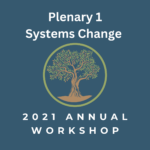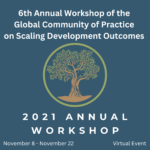By Innovation Edge, February 2019
At Innovation Edge (IE) we invest early. We invest in ideas that aim to transform the early life experiences of children and we frequently invest very early in the life- cycle of an innovation. Investing early does not mean we don’t think about the long term. We only invest in ideas with the potential to scale sustainably with consistent social impact. Upfront considerations around scale, sustainability and impact are made when we screen incoming applications and as we continue to assess the viability of an investment as it progresses through our pipeline.
Through our five years of successes and failures, we developed our Venture Progression Map (VPM). The VPM is a tool for taking ventures from ideation to scale. A key element of our approach is how we have disaggregated the lifecycle of a venture. We have seven progression stages: Ideation; Feasibility/Research and Development; Proof of Concept (POC), consisting of Development and Piloting; Refining and Testing; Making the Case; Transitioning to Scale; and Scaling.
As ventures move from ideation to scale, we ask questions around ten progression categories: (1) Increments of evidence; (2) Demand; (3) Value proposition; (4) Scale quantified; (5) Governance, legal and compliance; (6) People (including aspects of leadership); (7) Sustainable resourcing; (8) Internal systems, tools and processes; (9) Ecosystem readiness; (10) Marketing and communications. These categories are not always mutually exclusive; they often intersect; but distinguishing between them is helpful as they identify key aspects for consideration as we move towards scale.
The journey is displayed as linear, but in reality, that is not always the case. Through learnings and insights we may need to go back to a ‘completed’ stage or rethink our conclusions about a category. You can access the full VPM here.
Here are some insights from our work thus far:
- Think about users and customers, not beneficiaries. This encourages thinking about demand, value proposition and the market.
- You can reach a destination via different routes. Sometimes the planned route is not the one you take in the end, but having a planned route is an essential starting point for the journey. By the end of our feasibility stage, we would expect a theory of change (TOC) and a theory of scale (T2S) to guide what assumptions are tested.
- Vertical alignment is important. A sustainable, scalable and impactful venture requires all the categories to be aligned. Further down the line that alignment is not always possible if it is not managed incrementally e.g. don’t get too far down the road with an idea that works, but that doesn’t have the team in place to manage it at scale or the demand from customers or users.
- POC is not one step. Our VPM breaks the POC process into 3 stages. This helps us to manage our expectations of an investee more realistically.
- Don’t try to count impact too early. While we would love to tally the numbers reached across our portfolio and frame that number as ‘impact’, we know that this is not meaningful. We are also cautious about conflating breadth and depth of impact.
As with the brain science of early childhood, we know the importance of laying the right foundations. We’ve learnt that success at scale for a venture requires these building blocks and that a solid foundation is only possible if all the blocks are in place. As very early stage investors, we also know that taking risks is part of our mandate and part of our value add to the ecosystem, so our VPM should not be used as a set of non-negotiables, but a tool for reflection.
Contact: Lyndsey Petro lyndsey@innovationedge.org


